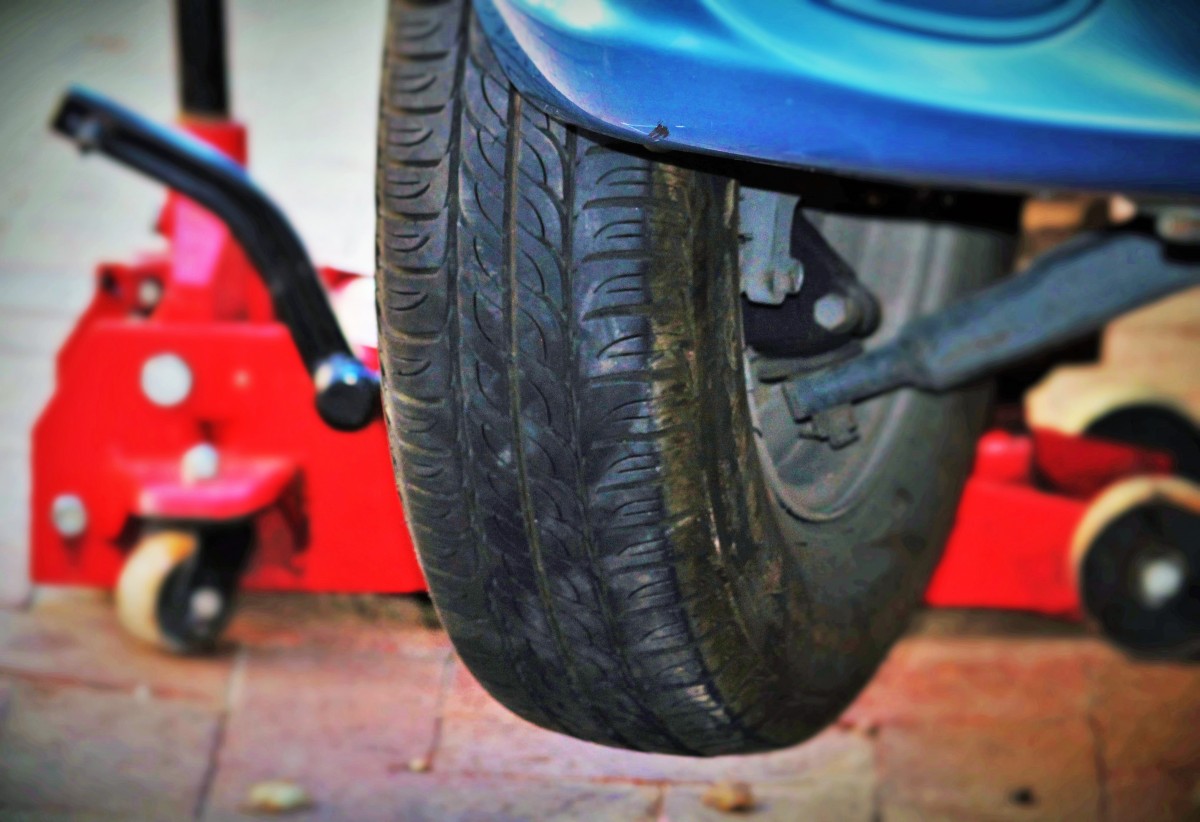Changing a wheel

This is an optional car-care project that requires you to change a wheel, however, we recommend that if relevant for your car you complete it for the following reasons:
- Even brand new cars get punctures! A puncture 10 minutes before a driving test needs prompt efficient action - or it could end up costing you a fortune... You need to be able to change a wheel.
- It's possible that you have never changed a wheel on your current vehicle – or at all. The best time and place to learn wheel changing is on a dry day and on a flat road, car park or driveway – not on a dark night in the rain on a deserted moorland road where there is no phone signal!
Whether or not you intend to complete the project please read the information on this page.
Note: Many cars no longer have a spare wheel - this is to save costs and weight (a spare wheel and tools can weigh 20kg or more). The cars have emergency inflater kits or run flat tyres. Other cars have space-saver wheels and tyres.
Some instructors buy an additional wheel and car jack if their car does not have a spare or only has a space-saver - but bear in mind that it takes up most of the boot space as there will be no other place to store it. We have no recommendation regarding this, you need to make your own decision. A wheel, tyre, jack and wheel wrench could cost anything up to around £350 and you might never get a puncture. On the other hand you might get a puncture that causes a customer to miss a driving test - this could cost anything up to £350 in lost earnings, test fee and additional free lessons while waiting for a new test date...
Progressive driving instructors will include car care - including wheel changing in their courses. Doing this not only provides your customers with 'skills for life' information, it is also a profit opportunity. Having said this as more cars are sold without spare wheels the value of wheel changing tuition diminishes.
Flat tyres
OK. So changing a wheel is something that you don't do unless you absolutely have to! And you can bet it will be raining or snowing, on a narrow road or in busy traffic.
Some drivers never get a flat tyre, but we find that they tend to come in threes! You can go ten years without a puncture and then get three in the same month.
You can drive around hoping that it won't happen, call the AA or stand and look helpless at the side of the road. Or you can learn how easy it is to change a wheel.
If you have never changed a wheel before it will take around 25 minutes the first time you do it - when you know the drill this drops to about 10 minutes. Please be aware that removing a car wheel can be dangerous and that you must always follow the manufacturers safety instructions.
If you choose to complete this project it is best done on a dry day (sunshine helps!). Make absolutely sure that your car is secure with the handbrake firmly applied, the engine switched off and and first or reverse gear selected. For added security it's a good idea to 'chock' the wheels with anything that you have to hand (a piece of wood, stone, brick, or anything else that can be placed behind one or more of the wheels).
Visit this link for a full explanation of how to change a wheel. The link is for' Mick's Garage' automotive professionals.
If you choose not to do the project watch this short RAC video for a shorter explanation.
Real life punctures
Important pointers: about wheel changing after a puncture:
- Call emergency services if on a motorway or similar fast road. Never try to change the wheel on a motorway without police or Highways Agency patrol protection.
- Always use hazard lights while changing the wheel
- Always wear a hi-viz vest if changing a wheel at the roadside
- Place a warning triangle about 45 metres behind the car or where it can be seen clearly.
- At night get help from another driver. He/she can park their car behind yours offering extra protection and light from the headlights
- Make sure you put everything back in the car when you finish!
- If your car has a 'skinny' space saver spare wheel keep your speed below 50mph. These wheels are only designed for temporary use and should be changed at the first possible opportunity.
- Get your puncture repaired as soon as possible and, if you are in any doubt, have someone check that your wheel is fitted properly.
Next: Step 7, Car-care questions
